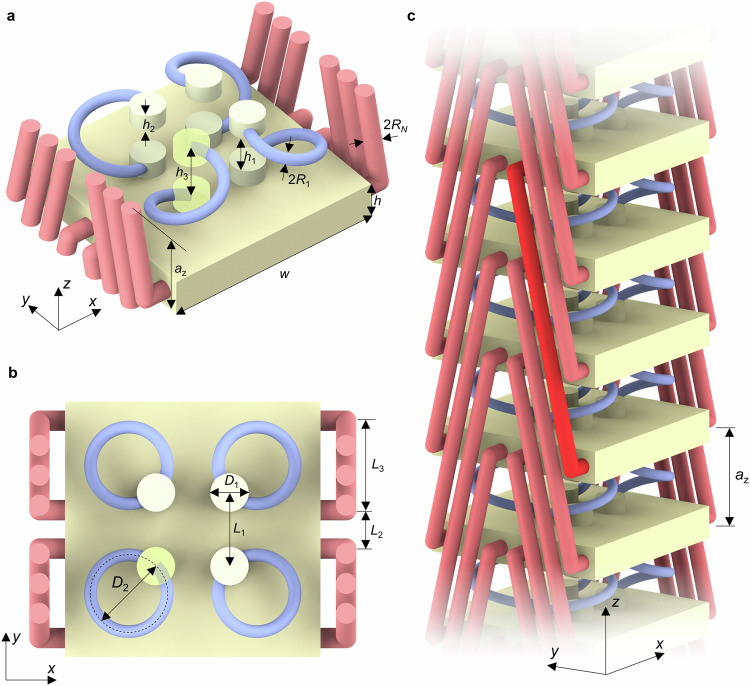free to flow without friction. ...the particles to share a global macroscopic phase while being able to reduce their total energy by spontaneous, spatial self-organization....the breaking of translational symmetry with a precision of several parts in a thousand...We demonstrate the potential of our synthetic photonic material to host phonon dynamics and a multimode excitation spectrum.
https://www.nature.com/articles/s41586-025-08616-9
The observation of the supersolid state in photons provides a new window through which to peer into its mysteries.
https://phys.org/news/2025-03-laser-supersolid.html
As the light struck the ridges, interactions between it and the material resulted in the formation of polaritons—a kind of hybrid particle—which were constrained by the ridges in a predesigned way. Doing so forced the polaritons into forming themselves into a supersolid.
The system allows the photons of light to occupy one of three quantum states, all of which have the same energy but sport different wavenumbers.
https://www.newsweek.com/supersolid-light-physics-quantum-mechanics-2041338
"Imagine being in a crowded theater where all the seats are occupied except for three in the front row: one in the center and the other two at opposite ends of the row.
"The central seat has the best view, so that's where people want to sit, but only a single person can sit there.
"In a quantum theater, where bosonic particles (particles with integer spin) go, everyone can sit in the central seat, forming what is called a Bose–Einstein condensate—a superfluid state in which a large fraction of particles simultaneously occupy the lowest-energy quantum state."
When the total number of photos increases further, however, pairs of photons are pushed out of the 'center seat' into the adjacent states (the other two chairs) to lower the energy of the system.
"These photons form satellite condensates that have opposite nonzero wavenumbers but the same energy (they are isoenergetic)," explained the researchers.
https://www.nature.com/articles/s41467-024-52956-5
Such evanescent waves are ubiquitous in optics, plasmonics, elasticity, and acoustics. In the limit of zero frequency, the wave “freezes” in time. We introduce frozen evanescent waves as the eigensolutions of the Bloch periodic problem at zero eigenfrequency. Elastic waves, i.e., phonons, in metamaterials serve as an example. We show that, in the complex plane, the Cauchy-Riemann equations for analytical functions connect the minima of the phonon band structure to frozen evanescent phonons.
we apply the concept of evanescent waves in single-domain samples to the static regime, in which the wave gets “frozen” in time.

Taking nonlocal mechanical metamaterials11–13 as a class of examples, we compare numerical simulations and calculations based on a simplified mass-and-spring model with experiments on finite microstructured three-dimensional (3D) metamaterial beams. The resulting unusual static behavior shows commensurability effects and interference effects and violates Saint Venant’s principle14,15. The latter means that the reaction of the system far away from a point at which a force is applied changes substantially even if one shifts this point by only a single unit cell. Furthermore, we discuss the implications of anomalous frozen evanescent phonons for the lowest-frequency eigenmodes of finite-size beams or plates. We find that even the fundamental eigenmode of a guitar string or a drum membrane made of an anomalous material can exhibit pronounced spatial oscillations – in sharp contrast to ordinary behavior.
https://pmc.ncbi.nlm.nih.gov/articles/PMC11502830/

No comments:
Post a Comment